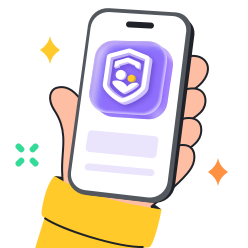Millions of videos, covering just about every topic, are available on the worldwide video platform YouTube. Since there is such a huge amount of information, it’s crucial to control which sites your family comes across to ensure they are safe online. Some users prefer to hide channels that might show material they find unsafe or a waste of time. Our detailed instructions teach you how to block YouTube channels and handle the display of content.
You will discover when you should block channels, what YouTube’s tools do not allow, and the detailed steps to block channels on phones, desktops, and kids’ devices. We aim to help you better organize your YouTube viewings for safety and concentration.
Can you block specific YouTube channels?
Restricting your child’s use of YouTube basically helps to ensure their emotional and psychological well-being. Because there are many different types of videos online, parents and guardians should use tools such as YouTube Kids, supervised accounts, and content filters to keep their children watching suitable content. Keeping access restricted disrupts harmful topics, bad language, or false claims from reaching the user.
The process to block individual channels is simple: from the channel’s About menu, click the flag icon and pick the “Block” button. While standard YouTube doesn’t let you block multiple channels of similar content at once and there are no types of channels that can be or can’t be blocked, all are the same. You can use Restricted Mode to block videos that have been flagged for violent, profane, and sexual content. In YouTube Kids you have even finer control—you can whitelist or block whole categories like Animals, Learning, or Music, as well as specific channels. Note, however, that on standard YouTube, you must block channels one by one if you want to target multiple genres.
A common misconception is confusing “hiding” with “blocking.” Hiding a channel merely removes its recommendations from your homepage or search results, it does not prevent someone from finding or viewing it if they search directly. In contrast, blocking a channel ensures all videos from that source are inaccessible on the account. It’s applied to; the channel’s content cannot be played, commented on, or subscribed to unless the block is removed. Understanding this distinction empowers parents to choose the right level of restriction for their family’s needs.
Limitations of blocking YouTube channels
There is no easy button on YouTube for banning a channel everywhere at once. All hiding, unfollowing, or blocking will only relate to your signed-in account on that device. Simply tagging a channel “Don’t recommend” means it won’t be suggested to you, but it may appear when you search or in other Google services. It works the same for blocked-user lists in chat or comments: they do not transfer from one account to another across various devices.
In short, there isn’t a simple block tool on the main part of YouTube. You should use parental controls on all the devices your child has access to, according to experts. Even with no blanket blocking, a motivated person could click the link to watch videos from a hidden channel.
It can also block more harmful websites
Why block YouTube channels?
Blocking channels with explicit, violent, or hateful videos keeps them out of sight. This basically protects viewers from disturbing or adult material, like the graphic violence or mature themes that parents and YouTube want children to avoid.
By removing distracting or irrelevant channels, you narrow the content to what really matters. Hiding channels that serve clickbait, excessive ads or off-topic material (e.g., game streams or gossip) lets viewers focus on useful or entertaining videos.
By limiting exposure to negative or sensational content can improve mood. This mainly helps in encouraging a positive video environment, for example, only showing educational or uplifting channels, which helps foster healthier screen habits.
Blocking unwanted channels is a fast way to curate your YouTube feed. Instead of endless filter adjusting, you simply stop certain genres or creators from appearing. This actually delivers a more personalized, enjoyable mix of videos.
Some channels host aggressive or harassing personalities. Blocking those channels stops you from seeing their videos and prevents you from being exposed to online bullying or manipulation.
Blocking channels can also enhance children’s online safety and viewing experience in different ways:
How to block a YouTube channel on mobile devices
On iOS (YouTube App)
Step 1. Open the YouTube app and sign in to your account.
Step 2. Search for the channel you’d like to block or locate it in your Home or Subscriptions feed.
Step 3. Tap the channel’s icon or name to open its main page.



Step 4. Just above the list of videos, tap the ••• menu button.
Step 5. Select Block user (or Hide user on newer layouts) from the menu.



Step 6. Confirm your choice when prompted.
On Android (YouTube App)
Step 1. Launch YouTube and ensure you’re signed in.
Step 2. Find the channel you wish to block, either by searching or from your Recommendations/ Subscribed tabs.
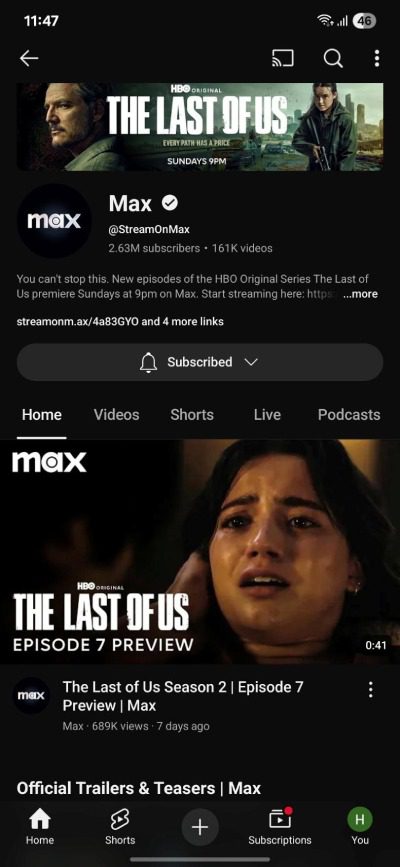


Step 3. Tap the channel’s avatar or name to view its channel page.
Step 4. Tap the …more for the channel’s About information.



Step 5. At the top-right corner, tap the 3 dotted menu and choose Report user (or Hide user on updated profiles).
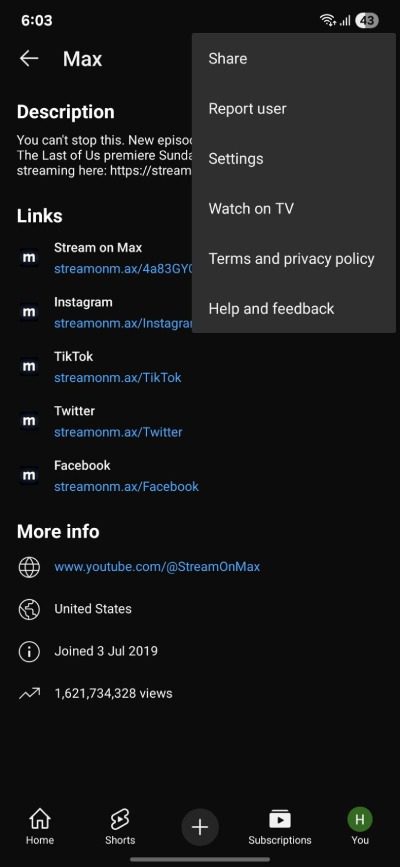


Step 6. Select any option from the given reasons to block the channel.
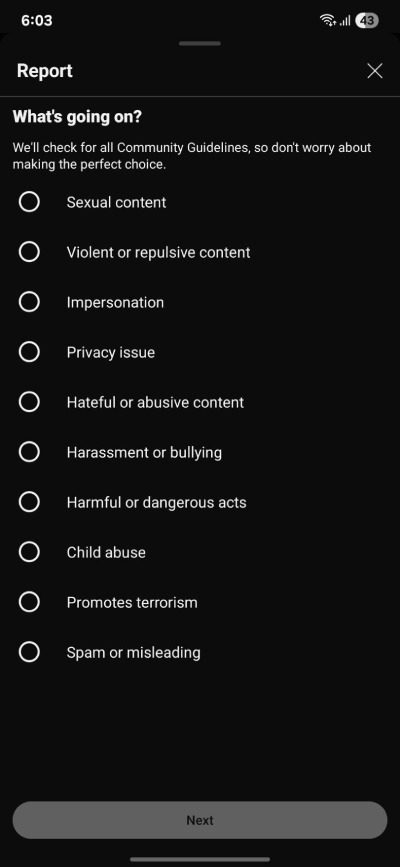


Other: If the channel still appears in your feed, play one of its videos. Below the video title, tap the three-dot menu and choose Don’t recommend channel. That will remove the channel’s videos from your YouTube suggestions. You can also mark individual videos as Not interested by tapping the menu and selecting Not interested which hides similar videos.
How to block a YouTube channel on desktop
To block YouTube channels on a computer’s desktop, it simply use YouTube’s web interface and settings:
Step 1. First, sign in to YouTube in your web browser and navigate to the channel you want to block—either by searching its name or clicking its avatar wherever it appears. Once on the channel’s main page, look for the About tab of the channel.



Step 2. From that menu, choose Report user and select the reason from the list to confirm your choice. This action prevents the channel from commenting on or messaging you, and signals to YouTube that you no longer wish to see its content.
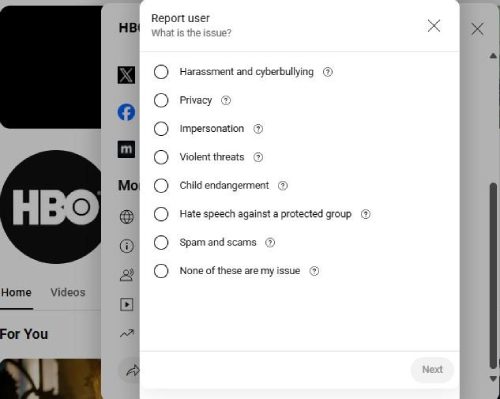


Step 3. To reinforce the block, visit any video from that channel, click the three dots beneath the title, and select Don’t recommend channel. Doing so ensures that YouTube skips over that channel’s uploads when populating your Home and Up Next feeds.
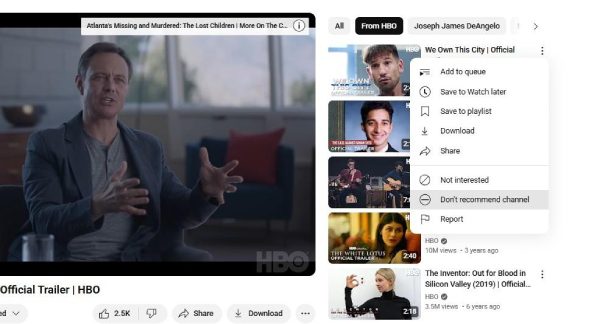


Step 4. If you still encounter its videos, clear any traces by going to your settings in YouTube (Google account settings) and managing your YouTube watch history.
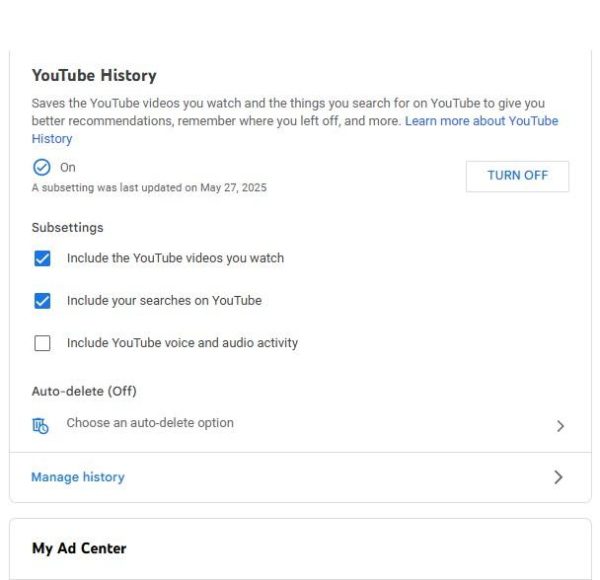


Step 5. You can also remove watched entries from the blocked channel and pause your watch history to halt further personalization. These steps together keep the channel fully blocked from both interaction and recommendation.
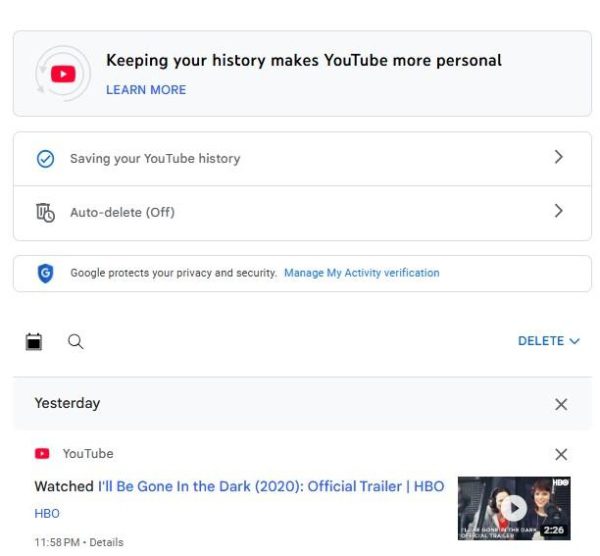


How to block YouTube channels on a child’s device
For children, using the right account type and parental controls is essential. Here’s how to set up restrictions:
Step 1. If your kids are under 13 (or your area’s age), set up a Google Account for them and link it to your account on Family Link. Go to Family Link or families.youtube.com to create a supervised YouTube profile for your child. You’ll decide on the content level during the setup process (e.g., explore or approved content). What this does is prevent underage content from appearing. YouTube suggests you choose the appropriate maturity level based on your child’s age.
Step 2. On your device, open the YouTube app and tap your profile, then Settings > Family Center. (Alternatively, in the Family Link app, select your child > Controls > Content Restrictions > YouTube.) You’ll see YouTube controls for your child’s account. Here you can manage content levels and channel blocks.
Step 3. Within the Family Center, there is a feature to help you block certain content for your account. If you use your parent account, you can decide which channels your child can’t watch. If the channel is blocked, your child won’t see its videos any longer. You can either find channels by name or paste their links to block them.
Tips for parents to monitor and guide YouTube use
Review your child’s YouTube history regularly
Keep checking what videos your child watches by seeing their YouTube history. If you find something unsuitable, address it directly and discuss why it’s a concern. Specific videos can be erased and your watch history can be paused whenever you choose. If you find something inappropriate, address it directly and discuss why it’s a concern.
Set clear and consistent screen time rules
Let your kids know there are rules such as no YouTube at the table or only after lessons are completed. Children are more likely to follow rules when families talk openly.
Watch and learn together
Watch videos online together with your children and keep in touch with chats or calls when video calling isn’t possible. If your child likes some channels, sign up for others dedicated to learning, music, or do-it-yourself ideas. Having access to quality content helps you watch TV in a more positive way.
Use parental control tools for better monitoring



Parental control guidelines support a healthier internet experience by preventing too much screen time, blocking unwanted content, and encouraging the right way to use the internet. Also, one of the powerful solutions is FlashGet Kids, a comprehensive parental control tool designed for real-time monitoring and management. The following are some of its features:
- Allows you to mirror your child’s screen or access their camera remotely to see what they’re viewing in real-time.
- Prevents access to specific apps like YouTube during restricted hours.
- Monitor your child’s real-time location for added safety.
- Provides insights into screen time and app usage for better control and guidance.
FAQs
No. YouTube does not currently offer a way to block all videos containing a specific word or topic. You can only block at the channel or video level. To avoid certain topics, parents can explain to kids to “not search for” them or use third-party filters, but there’s no built-in keyword filter on YouTube.
Yes. When you don’t recommend a channel on a video, YouTube will stop showing suggestions from that channel on your Home, and watch pages. It effectively removes that channel’s new videos from your recommended feed.
No. If you block (or hide) a user/channel on YouTube, that person cannot comment on your channel or videos. Blocking is mainly about interactions — it prevents unwanted comments or messages from that user.
Conclusion
Gaining control over your YouTube viewing is really worth your time. These methods let you remove and block YouTube channels and enjoy a safer, better organized way of watching content. The best way to keep your children safe is to use a mix of Family Link, supervised accounts, and parental-control apps.
As an illustration, FlashGet Kids is a third-party program that includes strong monitoring and app control which gives parents everything they need to manage what their children access and use online. Setting up suitable controls allows you and your family to enjoy what YouTube offers and ensures the experience remains human-friendly.

